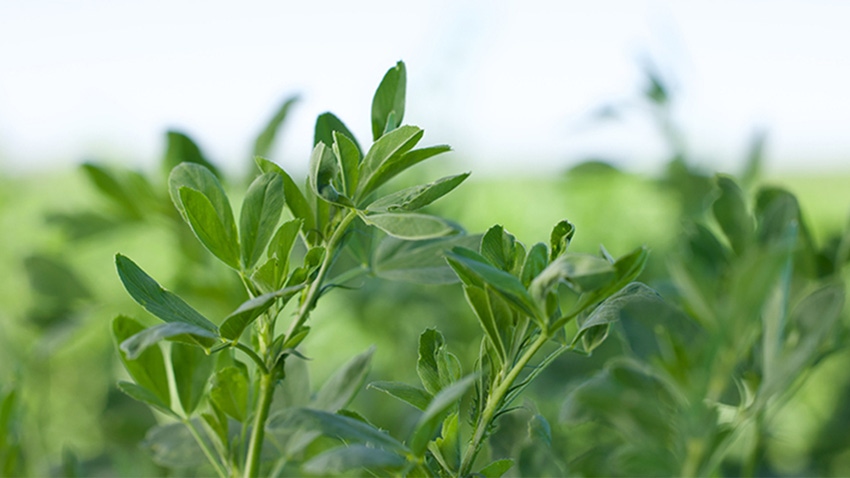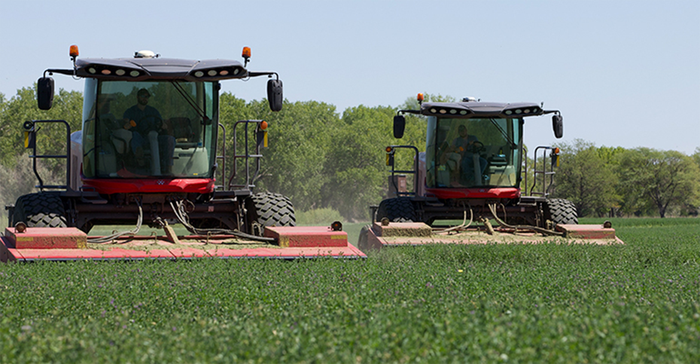April 1, 2024

Are you reevaluating your future crop rotations? Don’t let alfalfa fall off your lineup. From improving soil properties to being a powerhouse ingredient in feed rations, alfalfa has a lot to offer.
1. Soil Health
As a perennial crop, alfalfa provides cover crop like benefits, such as reducing soil erosion and improving soil structure with its deep rooting system.
2. Advanced Genetics
Advanced traits and genetics are changing the game for alfalfa producers, helping make the crop easier to manage. HarvXtra® Alfalfa, for example, is designed to give you options on when you harvest. Instead of planning your life around alfalfa, you get the freedom to cut when it works with your schedule without worrying about losing forage quality or yield potential.
3. Nitrogen Savings
As a legume, alfalfa naturally fixes nitrogen. The fixed nitrogen remains in the soil and has the potential, if managed correctly, to supply the majority of nitrogen to the following crop. In some cases, it can even provide some nitrogen credits into the second year after stand termination, reducing future nitrogen costs.

Photo submitted by Forage Genetics International
4. Dairy Nutrition Benefits
Alfalfa serves as an ideal base for a ruminant diet. It has a relatively low fiber content measured by neutral detergent fiber (NDF), so it takes up less space in the rumen, allowing more space for higher intake of the entire diet.
It also has a higher cation exchange capacity (CEC) than most forages. This is important because it maintains a higher metabolic pH in the animal, which helps support the opportunity for higher milk fat production.
When compared to corn silage, alfalfa wins in the protein delivery category as well. Typically, alfalfa is higher in the amino acid lysine than corn products and byproducts, thus complementing high corn-based diets.
Finally, alfalfa can stimulate cud chewing better than corn silage, which optimizes milk fat production.

Photo submitted by Forage Genetics International
5. Risk Mitigation
Alfalfa can bounce back from certain weather events when other crops can’t. For example, if an alfalfa field gets hail damage, it will grow back 28 days later. If corn gets hailed out, however, depending on where it’s at developmentally, it could be done for the season. Alfalfa can also go summer dormant during a dry period and come back once moisture is available.
6. Cash Flow
With multiple cuttings harvested throughout the summer, alfalfa also provides a steady stream of revenue during a time other crops typically aren’t bringing in profit.
7. High Demand and Prices
Alfalfa demand is strong, and prices are holding high. For growers who manage their acres wisely, there is plenty of money to be made in alfalfa. While some growers may be pulling back on alfalfa, there are many valuable reasons to keep it in the rotation. Learn more about how to successfully manage the perennial and the benefits HarvXtra Alfalfa provides.
© 2024 Forage Genetics International, LLC. HarvXtra® Alfalfa is a registered trademark of Forage Genetics International, LLC.
You May Also Like

.jpg?width=300&auto=webp&quality=80&disable=upscale)



